This was published 1 year ago
Out of the comfort zone: The things we never thought we'd do
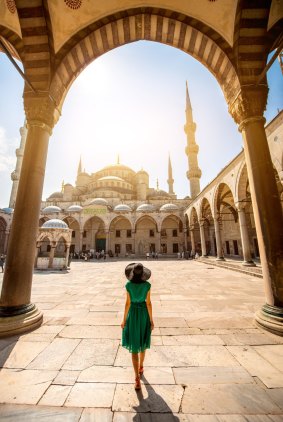
Travelling alone can be intimidating, but it has rewards.Credit: iStock
This, surely, is what travel is all about. The whole idea of this pursuit we love is to go places and to do things that we've never seen or done before. That's travel in its essence. It's the very reason we leave the house.
Yet still, for all travellers there are lines we never thought we would cross. Even for the most adventurous, the most experienced among us, we have in our minds: "Never." I would never visit that one country; I would never take the plunge on that one adventure; I would never risk it all in the dark on a far-flung beach in Iceland (a tale that will be revealed to you below).
But it can be so rewarding when you do. The following are weird and wonderful stories from the Traveller writers of experiences, from wild to mild, we just never thought we would undertake. They're the times we have abandoned caution, have pushed ourselves just that little further, have taken active steps to move outside our already wild zones of comfort.
With great risk comes great reward – these, surely, are stories to support that notion. Take that risk. Take a gamble. Do something you never, ever thought you would do. There's a good chance you will love it.
I never thought I'd ever … end up loving solo travel
By Kristie Kellahan
A few years back a friend of mine travelled to a romantic resort in Thailand with a new flame. Finding the spark between them had fizzled right about the time they cleared Immigration, she then spent 10 days in politely strained company, wishing she was alone.
In the hours of silence that followed, my friend observed a fellow guest at the resort relaxing by the pool, reading magazines for hours and taking herself out for dinner. "I have never envied another woman more," my friend told me. "She just seemed so content by herself."
I am often that other woman. From the streets of Paris to beachfront margaritas in Mexico, a party of one can be the best party of all. One and one alone nabs the prized spot at the bar, the last seat on the tour and the freedom to go your own way.
I didn't always think so. A shy, bookish kid, I wouldn't go to the corner shop by myself. As a teenager, I believed there was safety in numbers. By my mid-20s, there were the first stirrings of a solo traveller wanting to break free.
Weighing the pros and cons of holidaying with my boyfriend, I begrudgingly wrote in the "pros" column: helps with luggage. The "con" list? It was rather long.
First attempts at independence on the road hit some snags. Two weeks in Mauritius, the honeymoon capital of the world, right after a major break-up? Not great. I sat alone each night, staring miserably into my lobster bisque, as all around me loved-up diners came in two by two, hurrah, hurrah.
The turning point came when I discovered my love for cruising solo. Alone but not lonely on a ship, I relish days spent exploring on my own schedule and having a cabin all to myself. There's usually an invitation to join others for meals. Sometimes I even accept.
With my gaze turned outwards, I'm reminded the world is full of good and interesting people. Serendipitous meetings on a bus in Stockholm, in a Chiang Mai temple and at a seafood counter in Boston have led to lasting friendships.
Given the choice now of travelling solo or with company, well, it all depends on the company. I pack a lot lighter these days.
I never thought I'd ever… abseil Table Mountain being a vertigo sufferer
By Rob McFarland
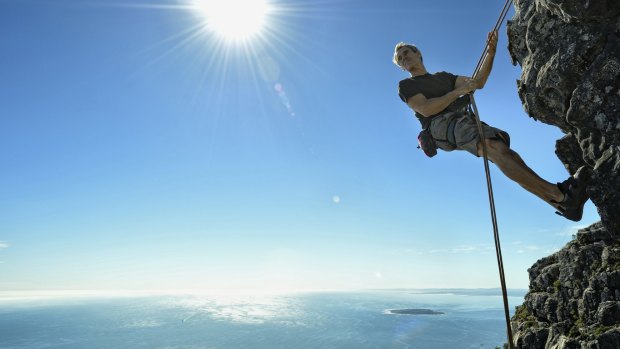
Credit: iStock
There are certain phrases you don't want to hear when you've just started one of the world's highest commercial abseils.
"I hope you like surprises" is one of them. Moments earlier the same grinning guide persuaded me to lean back over the edge for a photo while he held a rope attached to my harness with one hand. The 112-metre plunge is terrifying enough, but the ledge I was standing on was 1000 metres above sea level.
I can't imagine doing either of these things at home. My aversion to heights is so intense I get anxious on a high kerb. Yet here I am, in Cape Town, South Africa, gingerly edging down the western flank of Table Mountain.
After a few metres, I get a little cocky. I try a small jump. And another. This is fun. Suddenly, I'm an elite Navy SEAL bounding down the side of a skyscraper.
And then something terrible happens. I run out of rock face. Below me is nothing but a yawning cave. I'm still more than 50 metres above the bottom and there's nothing left to abseil down. I start to panic. I must have gone the wrong way. How the clucking bell do I get down from here? And then, it dawns on me ... this is the surprise.
I let my feet swing under the overhang and dangle like a spider on a thread. It's a bizarre feeling to hang suspended in mid-air, slowly spinning with nothing around you. One benefit is I get to appreciate the majestic views over Cape Town's western coast, from the dramatic summit of Lion's Head to the golden beaches of Clifton and Camps Bay.
After a few more minutes of careful descent, my feet finally touch the ground. When I step out of the harness and gaze up at the towering rock face, I'm engulfed by a wave of euphoria. This is why I travel. To try things I wouldn't dream of doing at home. To step – or in this case, abseil – way out of my comfort zone. To face a fear and feel that superhero-like rush of doing it anyway.
Sadly, it's short-lived because the guide at the bottom has another unwelcome surprise. The only way back to the summit is a 20-minute trek along the India Venster trail. And it's uphill all the way.
I never thought I'd … ever fall in love with the one country I never wanted to visit
By Ute Junker

Credit: iStock
In the days before Instagram and the Internet, you had to search a little harder for travel inspiration. When I was young, I found mine in books. It may have started with visions of Venice planted by Little Toot on the Grand Canal, but by the time I hit my teens, I had a long travel hit list, all destinations that I'd discovered through books.
Basically, if I read about a place, I wanted to go there. Except for India. I had read a lot about India, but none of it was good. The poverty, the stultifying caste system, the wretched lives lived by far too many of its inhabitants – none of it appealed.
Even into my 20s, when my more hippy-ish friends came back raving about India, I remained convinced that it wasn't my sort of place. It was only when I read the dizzying, kaleidoscopic novels of Salman Rushdie and Vikram Chandra that I decided I might be willing to give India a go.
As often happens, having decided to do something, I plunged right in. I signed up for a multi-week expedition that included the splendours of Rajasthan, some time in the south, even several days of camel trekking in the desert.
It didn't take long to realise that India, with its chaos, its clamour, its confusion, its cacophony of life unfurling in the streets, was like nowhere else I'd been.
At first, I wasn't sure that I liked it. But i didn't hate it, either. Over the next few weeks, India gradually won me over. I fell in love with its constant contradictions: suited businessmen carrying offerings for their local shrine, monkeys scampering through Mughal monuments, families sleeping on the street in front of glitzy skyscrapers.
I learned that the country's downsides – poverty, obviously, but also a confronting lack of personal space and privacy - was balanced by an enormous warmth.
I have been returning to India ever since and I discover a new corner of the country every trip, from the Himalayan slopes of Sikkim to the flower markets of Kolkata and the cave temples at Ajanta and Ellora.
What I still love the most, however, is to take in the life of the streets, buying a cup of chai tea or a samosa from a street vendor, and letting the colourful spectacle wash over me.
I never thought I'd ever… overcome my disgust for coffee in such a surprising place
By Steve Madgwick
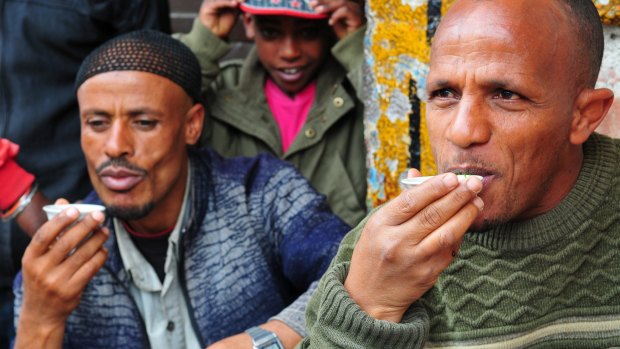
Credit: iStock
The flip-flop from yuck to yum was instantaneous and alchemically freakish – as if an irresistible force was at play. Until this inexplicable moment in my 30s, the taste and smell of coffee physically repulsed me. Even sugary coffee-flavoured desserts incited fur-balling-cat-like dry-heaves.
"You'll grow out of it," said teeth-stained mates, as if coffee addiction was a mandatory gangplank to adulthood. I'd overcome other taste kryptonites (notably olives) but, with coffee, every time I tried to grow up, I'd almost throw up.
I involuntarily spat my first mouthful of Greek frappe (iced coffee) onto a Hellenic beach cafe counter, grossing out and offending sour-faced staff. I tried to try "the best espresso in Florence", miraculously keeping a baby-sip onboard, but needing much supermarket chianti to extinguish the River-of-Styx aftertaste.
By now, I was getting my daily caffeine hit from too many anxiety-accelerating cans of Red Bull, doomed to succumb to stained, rotten teeth or "Mountain Dew Mouth'', as JD Vance calls it in Hillbilly Elegy. Until I landed in Ethiopia.
Curious to see but not taste the country's famed traditional coffee ceremony, known as jebena buna, I plopped down on a crescent of tiny plastic stools at a kerb-side stall in the capital, Addis Ababa. By sitting alone, however, I had unwittingly triggered a cultural dilemma: drink coffee or metaphorically spit on an ancient friendship ritual.
A young woman dressed in a traditional habesha kemis arranged fresh-cut grass around the ornate rekebot (table). With elegantly atavistic movements, she washed and ground "my" beans, before roasting them on a blackened iron pan; waving it perilously close to my clenching nostrils. Merged with misty sweet incense smoke, the coffee aroma failed to trigger my trusty heave-ho reflex.
While the brew bubbled in the medieval-looking jebena pot, my nerves boiled. After I declined sugar and, strangely, salt, she filled my teeny cup with a single stream, deftly poured from a theatrical height. Intuitively sensing my distress, she added "a stain" of foamed milk; a macchiato, Italy's parting gifts to the country it failed to colonise.
Inexplicably, the first sip tasted of familiarity and comfort, as if I had already drunk half the cup. The bitterness had transformed from projectile-provoking foe to tentative new playmate. As tradition dictates, she poured me two more cups; progressively weaker, helping my coffee-confidence grow strong.
Nowadays, I don't dwell on those "before times". Sipping from a tiny macchiato cup inevitably draws me back to that hypnotic half-hour in North Africa. I savour the rush and the memory, without ever revisiting the "why".
I never thought I'd ever… take a cruise
By Ben Groundwater
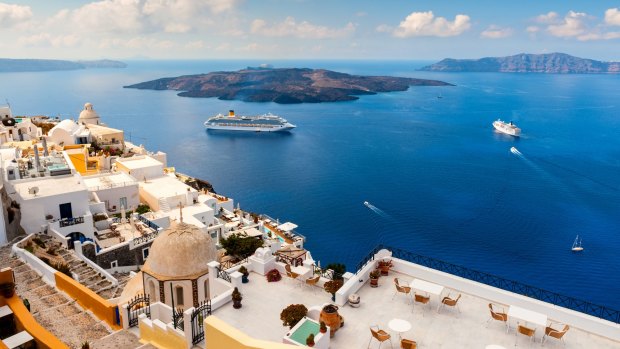
Credit: iStock
I'm determined to avoid being a cliche here. Because it is something of a cliche in this travel-writing world of ours to say you never thought you would go on a cruise and to then be gifted a free cruise and to suddenly love cruises.
You see the problem there, though the reaction is no doubt in part genuine. It is for me, too. There are things I truly love about cruising.
And anyway, this story isn't about cruising in general, because that's a huge umbrella under which you will find an infinite number of waterborne experiences: a cruise is a trip to Antarctica, and I loved that; a cruise is a journey around the Galapagos, which I would do again in a heartbeat; a cruise is a slow boat on the Mekong, chugging lazily to Luang Prabang, and that's so, so good.
Still, I never thought I'd do a cruise in the Mediterranean. Those huge ships with the stage shows and waterslides and buffets? Someone holding my hand in a place I already feel comfortable? I know that's not for me.
And yet a few months ago I did a Mediterranean cruise. Not aboard a floating colossus but a ship that carries only 100 passengers, a boutique cruise where everyone knows your name, and you quickly come to know every passenger by sight. You can walk the length of the vessel in a few minutes.
I was on board for a week, travelling from Athens to Dubrovnik, via Albania and Montenegro. And I really did love some elements of the experience. I loved being on the water, the feeling of adventure, the kiss of salty air, the joy of movement that's slow and majestic. I loved the camaraderie on board, the way the passengers got to know each other and share in this privileged experience.
But we moved too fast. I missed the chance to immerse myself in a place and really feel it. We were in Albania for six hours. Six hours! I missed just sitting and being in a place, or wandering aimlessly and letting it all soak in.
I realised that to properly love a cruise like this you have to treat the cruise as the destination. Not the cities or the sights, but the boat and the experience of being on board. That's what I will do next time. So you see, I'm not a total cliche. Not in this instance, anyway.
I never thought I'd ever… have the courage to sleep atop an active volcano
By Nina Karnikowski
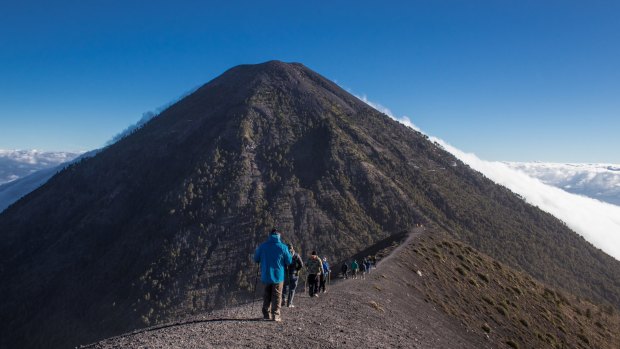
Credit: iStock
Despite being mildly acrophobic and a catastrophiser from way back, there I was. Attempting to sleep on top of Guatemala's Acatenango volcano, inside a thin nylon tent, in the middle of an electrical storm.
My heart was racing from lack of oxygen (we were, after all, at 3700 metres). The ground was vibrating with each clap of thunder. My legs ached from hiking to this point for five gruelling hours earlier that day. As I wriggled out of my soggy sleeping bag and crawled to the front of the tent, I asked myself for perhaps the 17th time that night: why on earth did I decide to do this?
The decision, in fact, had not come easily. I oscillated between "yes" and "no" with each story of delight or horror I heard from other travellers.
"No", when the woman on the plane said the trek up Acatenango was so difficult her toenails fell off. "No", when the young Canadian described the (not-uncommon) experience of suffering from severe altitude sickness at the top. "Yes", ultimately, when the German bartender in Semuc Champey told me, "you can really just … feel God up there."
I'm not religious but I was searching for something profound. And when I unzipped the tent flap that night, there directly opposite me that profound thing was: Acatenango's volatile sister Fuego, one of the most active of Guatemala's 37 volcanoes, shooting fluorescent orange magma into the inky sky.
My fingers shook with a mixture of excitement and fear as I tried to photograph the explosions. I sat there for a long time, mesmerised by the lightning cracking across the sky and the eruptions of molten stone. I felt afraid, sure. But I also felt more alive, and more connected to the earth, than I had in a long time. And if that's not a reason for doing more things in life that scare us, then I'm not sure what is.
I never thought I'd ever … get away with pretending I could snowboard
By Craig Tansley
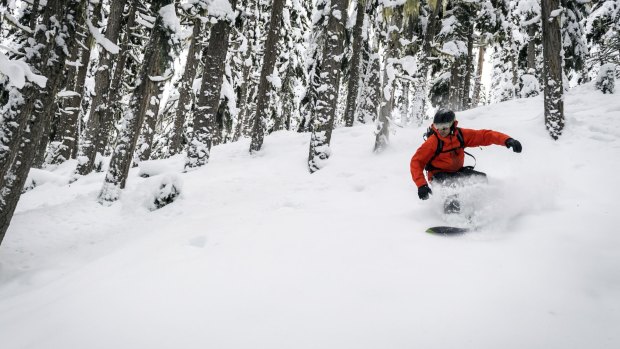
Credit: iStock
In the winter of 2000 I learnt to snowboard. At Thredbo I taught myself by studying the basics in a book - "keep your weight on your front leg, use your front knee to turn".
Then I learnt from trial and error; error, mostly. My backside was bruised black-and-blue. It may have hurt like hell, but I was hooked, though being the last weekend of the season, my new addiction would have to wait.
In January, 2001, I was offered a last-minute opportunity to replace a writer for a snowboarding magazine trip. I'd be travelling through western Canada with two of Australia's best professional snowboarders and a photographer.
I wrestled with my decision: on one hand, I was being offered a trip to the best ski resorts on Earth, on the other: I couldn't snowboard. But I could learn, right? My two-week itinerary arrived soon after: landing in Vancouver, we'd catch a train to Jasper, drive south to Banff, ride the resorts of Canada's Powder Highway, and finish off in Whistler.
My first day on snow was at Marmot-Basin, a resort above Jasper. It was minus-35 degrees and had snowed 60 centimetres overnight. I'd only ridden groomed slopes in Thredbo in NSW - powder snow was an entirely different proposition.
My companions tore through it at great speed. I landed face-first and couldn't get back up – deep snow has no base. No-one waited for me. Eventually I got up, leaned back and took off. I couldn't turn but I discovered soft snow doesn't hurt much when you fall.
No-one waited at Banff either. It was minus-44 there, so cold I bought a balaclava. I wasn't getting much better, just faster. Sometimes I had to follow my group into the back-country away from the resort through chest-deep snow. No matter where we went, I was always half-a-minute behind.
By the end, at Whistler, I was only 10 seconds behind. My turns were ugly but they got me down crazy-steep mountains. I rode some of the wildest slopes I've ever ridden even now, after 21 more years of snowboarding.
Perhaps I shouldn't have gone, but maybe I wouldn't have then fallen in love with snow travel. And the Rocky Mountains. I'm usually somewhere in them each northern winter. I even lived in the Rockies for a year. It really does pay to travel out of your comfort zone. Provided it doesn't kill you. Just get yourself a good physio.
I never thought I'd ever... propose in the dark on an Icelandic beach
By Justin Meneguzzi
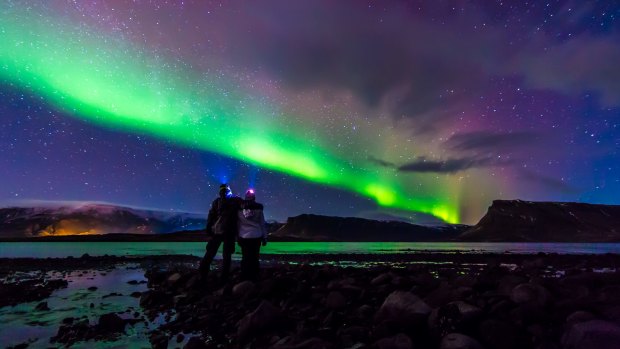
Credit: iStock
I looked up to see the ethereal northern lights twisting and curling in the night sky – just like the knot in my stomach. This wasn't how I expected to feel seeing the aurora borealis and they had arrived far sooner than I planned.
My partner and I were coming to the end of our magical Christmas holiday in Europe. We'd tried ice-skating in Munich and sipped gluhwein in Vienna, and our last stop was Iceland for a guided lap of the Golden Circle in search of the famously elusive Northern Lights, where I intended to propose.
The ring, a white gold band with interweaving loops designed to reflect the swirling auroras, burned a hole in my pocket the whole flight from Vienna to Reykjavik.
To keep distracted, I kept replaying the Big Moment over in my mind: a blazing aurora in the sky with me on one knee, my stunned and delighted future bride weeping with uncontained joy while tiny puffins clapped in the background. Yes, it would be brilliant.
We arrived at night and, on a whim, went for a stroll along the city's northern shore when the auroras made their grand entrance. Only, I'd left the ring back at the hotel. Torn between enjoying the moment (the lights can vanish as quickly as they arrive) or running back to the hotel, I chose to stay. "We're here for a week, I'm sure we'll see them again," I reassured myself.
My optimism faded as we travelled further east. Each evening delivered dreary overcast skies that dashed any hope of seeing a new aurora. As I desperately devised a Plan B, my thoughts were intruded by Kristjan, our guide, describing the next stop: Jokulsarlon Lagoon.
"Great chunks of ice shear off Vatnajokull Glacier, pass through the lagoon and then shatter into millions of little diamonds on the black sand beach on the way to sea."
My ears perked up. Where better to give someone a diamond than on a crystal-studded beach? We arrived in time for a blue dusk and fresh snow powdered our beanies and hair. Sarah sat on a slab of glacial ice while I got on one knee. She said yes. There were no cheering puffins.
This imperfect proposal was perfect for us, neatly encapsulating all our travels together over the years when things often went wrong but also went so beautifully, unexpectedly right.
Sign up for the Traveller newsletter
The latest travel news, tips and inspiration delivered to your inbox. Sign up now.